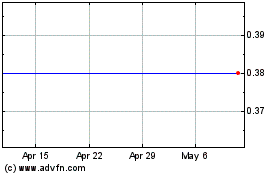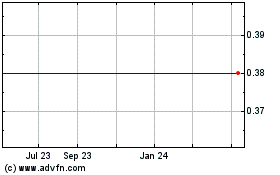By Chao Deng and Rachel Pannett
Fed interest-rate hike a vote of confidence on recovery
Markets in Asia rose Thursday after the U.S. Federal Reserve
said it would lift its benchmark interest rate from near zero for
the first time since December 2008.
Japan's Nikkei Stock Average (JP) gained 1.6%, Australia's
S&P/ASX 200 rose 1.4% and South Korea's Kospi rose 0.2%.
The Shanghai Composite Index rose 1.6% and Hong Kong's Hang Seng
Index rose 0.7%.
In the U.S., the Dow Jones Industrial Average rose 1.3% in the
11th-largest volume day of the year
(http://www.marketwatch.com/story/us-stocks-eye-gains-as-interest-rate-hike-looms-2015-12-16),
with nearly 8.5 billion shares trading.
"The Fed has been very clear in communicating its thinking and
the markets clearly appreciated that," said James White, senior
investment analyst at Colonial First State Global Asset
Management.
For months, expectations of higher U.S. rates rattled Asian
markets, as investors feared higher borrowing costs, particularly
for emerging-market firms with lots of U.S. dollar debt. The
prospect of higher-yielding assets in the U.S. also drew investors
away from riskier assets, leading to outflows from emerging
markets.
Benchmarks in Southeast Asia have been some of the region's
worst performers in the past year, with stocks in Thailand and
Indonesia both down 11% in the past 12 months. A stronger U.S.
dollar has also weakened emerging-market currencies and
commodities, typically priced in the U.S. currency, which become
more expensive to other currency holders. Malaysia's ringgit, for
example, is down 23% year-to-date and commodities from oil to
industrial metals are hovering near fresh lows.
Yet investors appear to have taken comfort in the Fed's
well-telegraphed move
(http://www.marketwatch.com/story/fed-enters-new-era-of-higher-rates-2015-12-16)
as a testament of the central bank's confidence in the world's
biggest economy.
Now that clouds of uncertainty have cleared about the Fed's
timing, markets can pivot attention back to other drivers, such
China's stabilizing growth metrics, which could brighten the
outlook for Southeast Asia's performance next year, according to
Nomura.
Another reassuring factor for investors is that the Fed has
signaled the pace of future increases would be gradual.
Fed policy makers are "aware of the risks if they move too
quickly," said Steve Friedman, senior investment strategist at BNP
Paribas Investment Partners based in New York. "That's the message
that investors are focusing on."
The first move, which takes effect Thursday in the U.S., would
increase the federal-funds rate by a quarter percentage point to
between 0.25% and 0.5%. Investors see a 55% probability of another
rate increase in April, according to a poll by CME Group.
MSCI Inc.'s Asia ex-Japan benchmark has risen within the nine
months following previous Fed tightenings, including in June 2004,
when the index rose as much as 37% from trough to peak in U.S.
dollar terms, according to analysis by Credit Suisse.
Analysts also say investors can anticipate some of the benefits
that come with higher rates. Some fund managers, for example, have
begun to bet on regional exporters that would get a boost from a
U.S. recovery as well as banks, whose loan spreads widen as U.S.
rates rise.
Many expect the dollar to continue strengthening as the Fed
raises rates. While that could add pressure to currencies in
emerging-market economies facing weaker growth prospects, it's also
a boon for the region's exporters, whose profits repatriated from
abroad rise and goods become more attractive to global buyers.
In China, officials last week voiced their intention to ease the
yuan's loose peg to the dollar, and instead let it track the
currencies of its broader trading partners. On Thursday, China's
central bank fixed the yuan weaker for the ninth-straight day at
6.4757 per dollar, pushing the onshore yuan to its weakest level
since 2011.
The onshore yuan last traded at 6.4828 against the U.S. dollar,
compared with 6.4733 late Wednesday.
The yuan can trade 2% above or below its daily reference rate
set by authorities.
The Japanese yen was last down under a percent at Yen122.44 to
one U.S. dollar compared with late Wednesday in Asia, and reached
its weakest level in more than a week.
Metals, which have been pummeled in recent months as the dollar
strengthens, are weaker Thursday in Asia. Still, losses are
relatively muted given the Fed decision doesn't come as a surprise,
traders say.
A bigger factor going forward will be China's economic recovery,
wrote Helen Lau, an analyst at Argonaut Securities, in a research
note. While Chinese metal producers have announced production
cutbacks in copper, aluminum and ferro-nickel, a factor that could
help prices, China has been known to support local steel and
aluminum companies, which have increased exports to offset
slackening local demand.
Gold fell 1% to $1,065.80 a troy ounce, and three month-copper
futures fell 0.2% from the previous close to $4,598 per ton.
Meanwhile, three-month aluminum futures rose 0.3% to $1,490 a
ton.
Brent crude oil , the international benchmark, fell 0.6% to
$37.16 a barrel.
(END) Dow Jones Newswires
December 17, 2015 01:42 ET (06:42 GMT)
Copyright (c) 2015 Dow Jones & Company, Inc.
Jupai (NYSE:JP)
Historical Stock Chart
From Jun 2024 to Jul 2024

Jupai (NYSE:JP)
Historical Stock Chart
From Jul 2023 to Jul 2024
